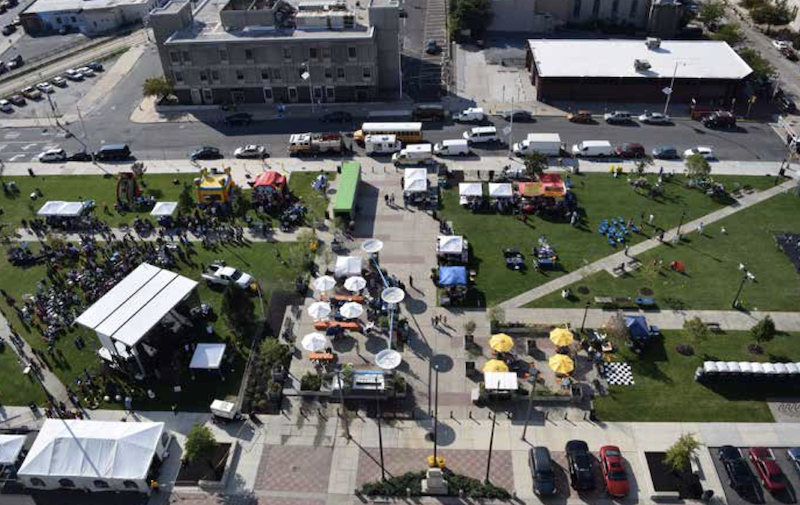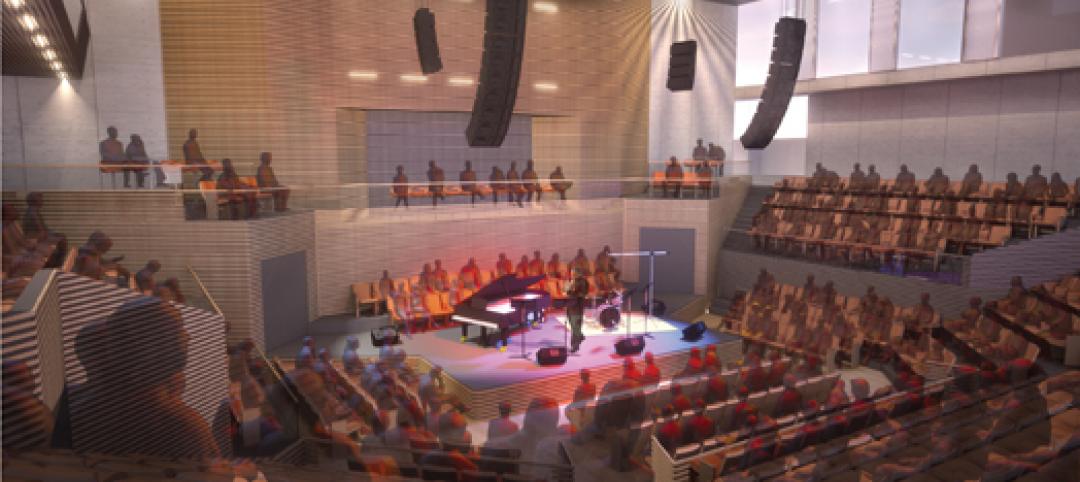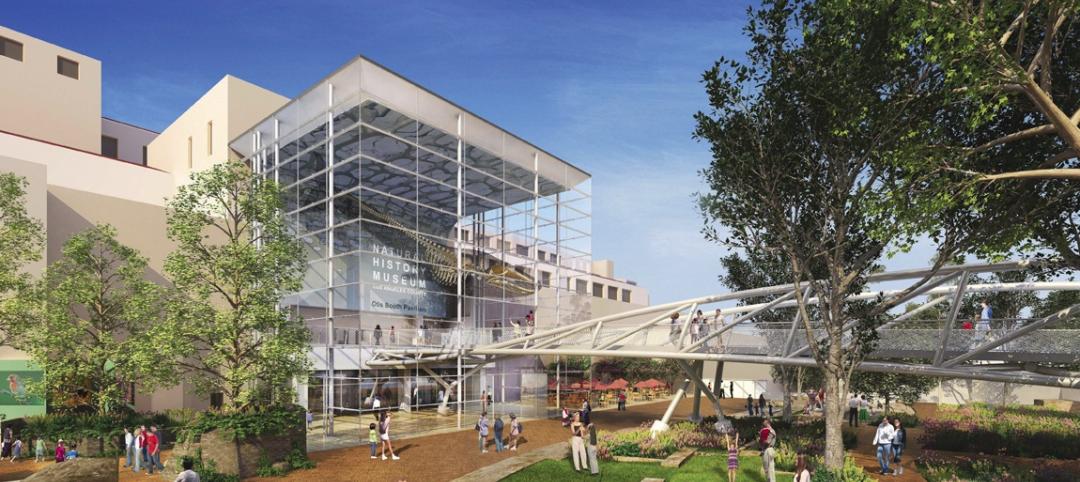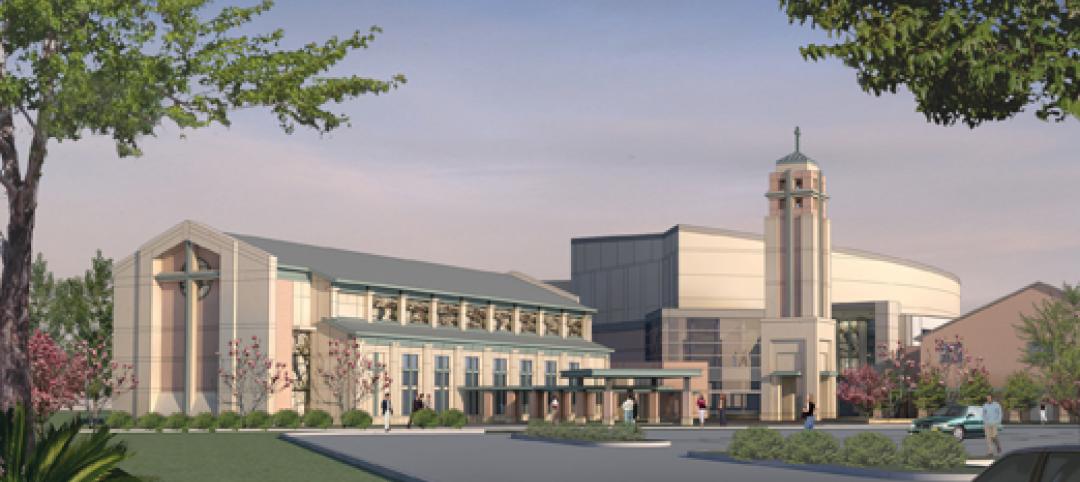A few years ago, in his book “Parking and the City,” Donald Shoup, distinguished research professor of urban planning at UCLA’s Luskin School of Public Affairs, estimated that there were eight parking spaces for every vehicle that was on the road in the U.S.
Other research also shows that one in three Americans doesn’t have a park within a 10-minute walk from his or her home.
With the number of automobile registrations down, and with ride-sharing continuing to gain customers—Uber fulfills more than 40 million rides per month in the U.S.; Lyft’s domestic ridership rose from 3.5 million in the first quarter of 2016 to 21.2 million in the first quarter of 2020—American cities “are rethinking the primacy of the car and are creating parks on land once dedicated to the automobile, including former parking lots and roadways, parking garages, and spaces underneath highway overpasses.”
That’s from “Pavements to Parks,” a new report published by the Urban Land Institute’s Building Healthy Places Initiative. The report provides conversion case studies on 15 projects and four municipal programs. ULI collaborated with 10 Minute Walk, a movement dedicated to improving access to safe, high-quality parks and green spaces in the U.S. That organization’s goal is to create a world in which, by 2050, all people live within a short walk of a park or green space.
CREATING A POSITIVE ENVIRONMENTAL AND HEALTH IMPACT
Transforming space designed for vehicles to public-use space has had its successes. For example, over 24,000 miles of railroad tracks have been converted to walking trails. The ULI report states that trail advocates announced in the spring of 2019 an initiative to create a coast-to-coast recreational trail, which would connect more than 125 existing trails nationwide.
The coronavirus outbreak has contributed to this pavement-to-parks trend, states ULI, by underscoring the importance of abundant and safe parks. “To provide space for physically distanced recreation, dining, and transportation, many cities are temporarily or permanently closing streets, parking lots, and other public infrastructure assets.”
Paved parking lots and roadways are also being reexamined for their impact on human and environmental health, especially how stormwater runoff picks up contaminants that end up in waterways.
The impetus behind park transformation can emanate from many sources, like the organic community engagement that helped create Chicano Park, a national landmark in San Diego; the drive of a visionary leader as at Norman B. Leventhal Park in Boston’s Financial District; or the determination of a city planning department as in Dutch Kills Green and the Queensboro Bridge Greenway in Queens, N.Y. “Regardless of the spark, the ability to look at an automobile-oriented place and see the possibilities for a greener, healthier, and more sustainable future is essential,” ULI states.
Collaboration in these endeavors is key. The report points to the birth of Roosevelt Plaza Park in Camden, N.J., which required leadership from the city and the redevelopment authority, as well as ongoing leadership from Cooper’s Ferry Partnership, a private nonprofit redevelopment corporation. “When many stakeholders are involved, it is important for partners’ unique expertise and priorities to be understood and respected,” says ULI.
Roosevelt Plaza Park replaced a building that included a parking garage, office space, and ground-floor retail. The building was condemned in 2003 and demolished eight years later. The space—which is located at the front door of City Hall—was reopened as a plaza in 2012.
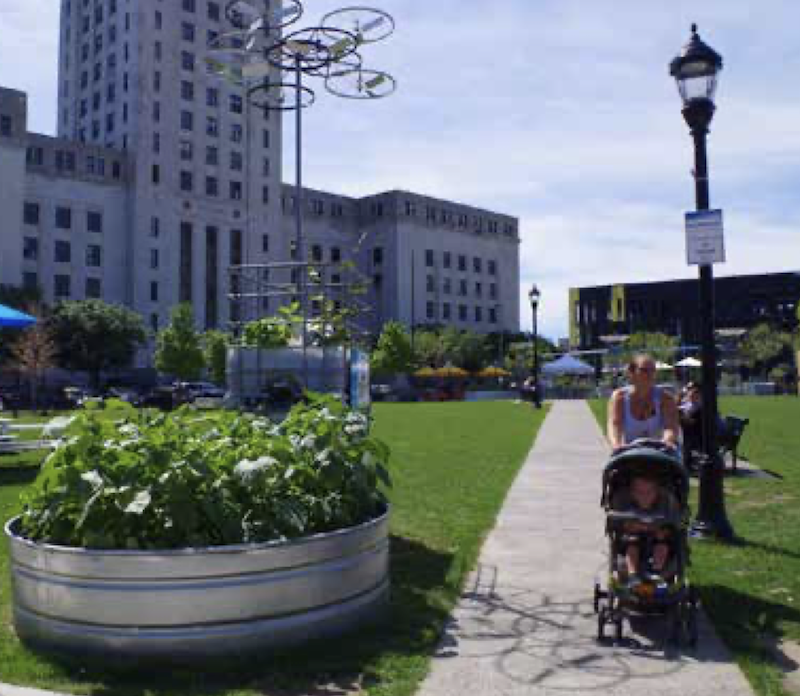
Pop-up and semipermanent installations attract people to Roosevelt Plaza Park. Image: Cooper's Ferry Partnership
The Camden Redevelopment Agency constructed the 1.5-acre park with Cooper’s Ferry Partnership. Two years later, a series of pop-up and semi-permanent installations and rotating programming created a flexible changeable model to attract parkgoers. And a partnership of Camden stakeholders stepped in to ensure that its ongoing programing would make it a safe and welcoming space for all residents.
Group Melvin Design and Sikora Wells Appel were the designers on this $9 million project.
COMMUNITY INVOLVEMENT IN DESIGN
Data collection was essential in the case of Philadelphia’s Porch at 30th Street, where project developers had to come up with a variety of programming to engage new stakeholders—including Amtrak employees and riders—with activities and amenities that met their needs.
Programming and flexibility play big roles in any transformation, too. For example, Klyde Warren Park in Dallas hosts 1,300 events per year, ranging from large receptions and concerts to children’s bilingual storytelling. And transformations must have the support of its local community. Throughout the design process for Tongva Park in Santa Monica, Calif., five workshops engaged over 200 community members and helped inform both the design for the park and the name selected.
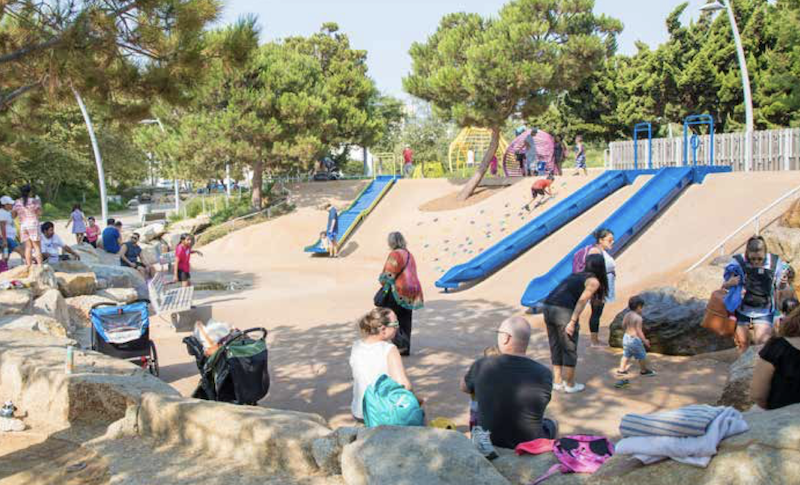
Tongva Park in Santa Monica, Calif., replaced surface parking. Over 200 members of the local community participated in five design workshops for this project. Image: City of Santa Monica
This 2.4-acre green space, formerly the site of the Rand Corporation headquarters (which was razed in the 1990s), had been used as a surface parking lot. Construction of the park began 2012, and was completed October 2013 at a cost of $42.3 million, paid for by city of Santa Monica. The community was engaged extensively during the initial design phase; 200 people showed up to the first of five community workshops, held on the empty site. Through the workshops, the landscape architect selected to lead the project—James Corner Field Operations— presented alternatives, residents provided feedback, and the final plan was a park designed with four hills and views of the ocean that did not exist previously.
Working in collaboration, the city’s public works department maintains the Tongva Park, and the community and cultural services department spearheaded by the cultural affairs division
is responsible for programming. The annualized cost to maintain the park by public works is about $300,000, not accounting for utility costs. Now that the park is established, every three years an additional expenditure of $25,000 is allocated for tree trimming. Although the park was initially built in an area that was relatively devoid of residents, a mixed-use housing project completed in 2014—with 318 units of for-sale condominiums and affordable rental apartments—sits adjacent to the park.
A PROGRAMMATIC SOLUTION
One of the ongoing parking-to-parks programs that ULI singles out is the nonprofit Depave, in Portland, Ore., which focuses on the removal of impervious pavements to eliminate stormwater runoff and pollution and the creation of more space for urban agriculture, trees, native vegetation, green infrastructure, wildlife habitats, and recreation and social activities.
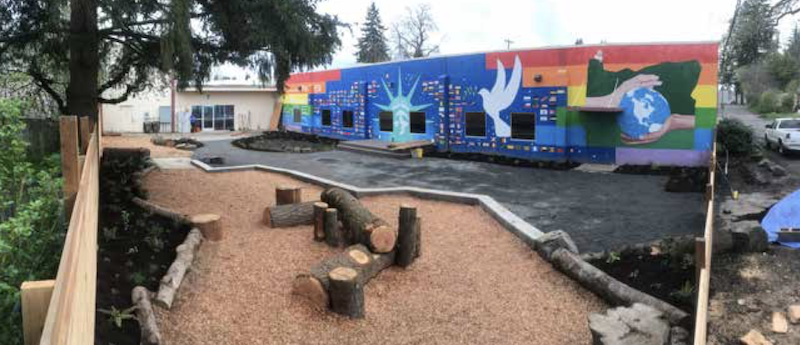
Inukai Boys and Girls Club in Hillsboro, Ore., which Depave converted from a 4,500-sf parking lot. Image: Katya Reyna, Depave
Depave partners with schools, churches, and community-based organizations that primarily serve low-income people and people of color, often in historically redlined and disenfranchised communities in Portland. Its volunteer and community partners implement conversion projects such as:
•Transforming a 4,500-sf parking lot at Inukai Family Boys and Girls Club in Hillsboro, Ore., into a nature play area with an educational rain garden for 200 children;
•Ripping up 1,700 sf of asphalt from an oversized parking lot at Plaza 122, a community investment trust commercial center in Portland, to make way for rain gardens and trees; and
Removing a total of 12,000 sf of asphalt from three Title 1 elementary schools in the Centennial School District, which serves Gresham and southeast Portland, replacing it with nature play areas, educational rain gardens, and native plants.
Related Stories
| Apr 12, 2011
Long-awaited San Francisco center is music to jazz organization’s ears
After 28 years, SFJAZZ is getting its first permanent home. The San Francisco-based nonprofit, which is dedicated to advancing the art of jazz through concerts and educational programs, contracted local design firm Mark Cavagnero Associates and general contractor Hathaway Dinwiddie to create a modern performance center in the city’s Hayes Valley neighborhood
| Apr 12, 2011
Entrance pavilion adds subtle style to Natural History Museum of Los Angeles
A $13 million gift from the Otis Booth Foundation is funding a new entrance pavilion at the Natural History Museum of Los Angeles County. CO Architects, Los Angeles, is designing the frameless structure with an energy-efficient curtain wall, vertical suspension rods, and horizontal knife plates to make it as transparent as possible.
| Apr 5, 2011
Zaha Hadid’s civic center design divides California city
Architect Zaha Hadid is in high demand these days, designing projects in Hong Kong, Milan, and Seoul, not to mention the London Aquatics Center, the swimming arena for the 2012 Olympics. But one of the firm’s smaller clients, the city of Elk Grove, Calif., recently conjured far different kinds of aquatic life when members of the City Council and the public chose words like “squid,” “octopus,” and “starfish” to describe the latest renderings for a proposed civic center.
| Mar 11, 2011
Chicago office building will serve tenants and historic church
The Alter Group is partnering with White Oak Realty Partners to develop a 490,000-sf high-performance office building in Chicago’s West Loop. The tower will be located on land owned by Old St. Patrick’s Church (a neighborhood landmark that survived the Chicago Fire of 1871) that’s currently being used as a parking lot.
| Feb 11, 2011
Sustainable features on the bill for dual-building performing arts center at Soka University of America
The $73 million Soka University of America’s new performing arts center and academic complex recently opened on the school’s Aliso Viejo, Calif., campus. McCarthy Building Companies and Zimmer Gunsul Frasca Architects collaborated on the two-building project. One is a three-story, 47,836-sf facility with a grand reception lobby, a 1,200-seat auditorium, and supports spaces. The other is a four-story, 48,974-sf facility with 11 classrooms, 29 faculty offices, a 150-seat black box theater, rehearsal/dance studio, and support spaces. The project, which has a green roof, solar panels, operable windows, and sun-shading devices, is going for LEED Silver.
| Feb 11, 2011
BIM-enabled Texas church complex can broadcast services in high-def
After two years of design and construction, members of the Gateway Church in Southland, Texas, were able to attend services in their new 4,000-seat facility in late 2010. Located on a 180-acre site, the 205,000-sf complex has six auditoriums, including a massive 200,000-sf Worship Center, complete with catwalks, top-end audio and video system, and high-definition broadcast capabilities. BIM played a significant role in the building’s design and construction. Balfour Beatty Construction and Beck Architecture formed the nucleus of the Building Team.
| Feb 11, 2011
Kentucky’s first green adaptive reuse project earns Platinum
(FER) studio, Inglewood, Calif., converted a 115-year-old former dry goods store in Louisville, Ky., into a 10,175-sf mixed-use commercial building earned LEED Platinum and holds the distinction of being the state’s first adaptive reuse project to earn any LEED rating. The facility, located in the East Market District, houses a gallery, event space, offices, conference space, and a restaurant. Sustainable elements that helped the building reach its top LEED rating include xeriscaping, a green roof, rainwater collection and reuse, 12 geothermal wells, 81 solar panels, a 1,100-gallon ice storage system (off-grid energy efficiency is 68%) and the reuse and recycling of construction materials. Local firm Peters Construction served as GC.
| Feb 11, 2011
Former Richardson Romanesque hotel now houses books, not beds
The Piqua (Ohio) Public Library was once a late 19th-century hotel that sat vacant and deteriorating for years before a $12.3 million adaptive reuse project revitalized the 1891 building. The design team of PSA-Dewberry, MKC Associates, and historic preservation specialist Jeff Wray Associates collaborated on the restoration of the 80,000-sf Richardson Romanesque building, once known as the Fort Piqua Hotel. The team restored a mezzanine above the lobby and repaired historic windows, skylight, massive fireplace, and other historic details. The basement, with its low ceiling and stacked stone walls, was turned into a castle-like children’s center. The Piqua Historical Museum is also located within the building.
| Feb 11, 2011
Sustainable community center to serve Angelinos in need
Harbor Interfaith Services, a nonprofit serving the homeless and working poor in the Harbor Area and South Bay communities of Los Angeles, engaged Withee Malcolm Architects to design a new 15,000-sf family resource center. The architects, who are working pro bono for the initial phase, created a family-centered design that consolidates all programs into a single building. The new three-story space will house a resource center, food pantry, nursery and pre-school, and administrative offices, plus indoor and outdoor play spaces and underground parking. The building’s scale and setbacks will help it blend with its residential neighbors, while its low-flow fixtures, low-VOC and recycled materials, and energy-efficient mechanical equipment and appliances will help it earn LEED certification.
| Feb 11, 2011
Texas megachurch inspired by yesteryear’s materials, today’s design vocabulary
The third phase of The First Baptist Church of Pasadena, Texas, involves construction of a new 115,000-sf worship center addition. Currently in design by Zeigler Cooper, the project will include a 2,500-seat worship center (with circular layout and space for a 50-person orchestra and 200-person choir), a 500-seat chapel (for weddings, funerals, and special events), and a prayer room. The addition will connect to the existing church and create a Christian Commons for education, administration, music, and fellowship. The church asked for a modern design that uses traditional materials, such as stone, brick, and stained glass. Construction is scheduled to begin this summer.


